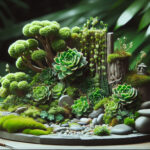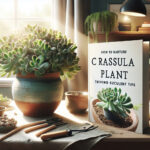Introduction
Have you ever caught yourself frowning at the sight of your once lively Crassula, only to find its vivid green has turned to a worrying shade of brown? You’re not alone in this puzzling predicament. It’s like a once-thriving succulent metropolis now mimicking the barren deserts from whence it came. The reasons behind this browning saga can be as varied as the hues of brown itself. Let’s embark on a detective’s journey to diagnose the fading vibrancy of the beloved Crassula.
Picture the arid landscapes and rocky terrains where the Crassula feels most at home, basking gracefully under the sun. These are low-maintenance champions, plump with juicy leaves, as if they’ve discovered the fountain of youth beneath the desert’s crust. However, when these resilient succulents start to don a somber brown, it’s a cry for help that cannot be ignored. It beckons a need to delve into the annals of care requirements, seeking clues to restore its lush jade hue.
Setting the Scene: Crassula’s Care Requirements
Before we unravel the mystery behind the browning leaves, it is essential to understand Crassula’s basic needs. A symphony of sunlight, minimal water, and well-draining soil are the predominant staves on the sheet music for a thriving Crassula concert. Deviate from this composition, and you might invite unwanted browning, like a dissonant note in an otherwise seamless melody. Think of it as the difference between a well-oiled machine and one that squeaks and stutters. If the browning of your Crassula plant were a game of “Clue,” the usual suspects might be found in the conservatory of care: too much water or too little light?
While we ponder on the possible causes like a gardener turned sleuth, let’s turn to Crassula Care Mastery: Tips for Thriving Jade Plants for expert guidance. Understanding the Crassula’s native habitat and duplicating those conditions can become our very own gardening whodunit, where the ‘who’ is easily substituted with the ‘how’ and ‘why’.
Imagine you’re not just a plant parent but a Crassula-crusading botanist. Your mission? To tackle the challenge head-on, equipped with the knowledge that could rival the Sherlock Holmes of horticulture. Your Crassula isn’t just turning brown; it’s whispering a tale of neglect or discomfort, a tale we’re here to decode. Join us as we venture further into the article, leaving no stone unturned in our quest to bring back the verdant vibrancy of your treasured Crassula.
Assessing Watering Habits
Have you noticed your typically vibrant Crassula adopting a rather drab and brownish wardrobe? Brown leaves often flag a mayday from your green mate, signaling distress in its leafy realm, predominantly due to watering pitfalls. Let’s set sail on diagnosing watering miscues both above and below the ideal moisture mark.
Starting with overwatering, it’s akin to a deluge of affection that can drown your succulent in soggy sorrow. Naturally residing in arid zones, Crassulas are designed to conserve water, making them prone to root rot if they’re soaking in a puddle of persistent affection. If your Crassula’s leaves are turning brown and feeling mushy or bloated, it might be waterlogged and gasping for reprieve. Conversely, underwatering sends your succulent into a drought-induced duress. This insufficient sip can shrivel and brown the tips as it desperately reaches for water that’s simply not there.
But fret not, intrepid planter! Striking the just-right watering balance for your Crassula is no Herculean feat. It’s about adopting an astute ‘soak and dry’ method—wait for the soil to completely dry between waterings, then quench it thoroughly. Remember, your Crassula would rather sip on a steady dram than suffer a feast-or-famine deluge. And don’t take my word for it; peer into this enlightening visual guide for practical insights on watering your resilient green companion:
Homing in on a real-life scenario, imagine someone who vacillates between neglect and overcompensation—barely a sprinkle here, a deluge there. Their Crassula turned a brown hue of despair until they learned that just as Goldilocks found her perfect porridge, a succulent finds solace in moderation. Once they called a truce with the watering can and settled on a consistent routine, their Crassula became a lush, green beacon of triumph.
Should you crave more sage advice on nurturing your succulents to peak verdancy, feel free to explore this treasure trove of Crassula care wisdom. Now, go forth and calibrate your watering approach with confidence, for a thriving Crassula stands as a testament to the balance and harmony of your attentive care.
Recognizing Sunburn and Proper Sunlight Exposure
Ouch! Much like us after a day at the beach without sunscreen, your Crassula can get sunburned, showing off unsightly brown patches that make you think, “Why on Earth is my lovely green sidekick turning brown?” So let’s dive into the nitty-gritty of sunburn in Crassula plants and shed light on how to strike that Goldilocks-level of sunlight – not too much, not too little, but just right!
First off, let’s talk about what sunburn on a Crassula looks like because knowing is half the battle. Imagine crisp, dry edges or spots that turn into a brown or bleached color. These are the battle scars from the plant’s fight with too much sun. Now, if these symptoms sound familiar, don’t fret! It’s not too late to nurse your leafy friend back to health.
Here’s where we turn the tide. Proper sunlight exposure is the key. Your Crassula adores a good dose of indirect sunlight. Think bright, but not so bright that you’d need sunglasses to stand next to it. A spot where the morning or late afternoon sun gently kisses the leaves is ideal. If you’ve got your plant outdoors, a place with dappled light – like under a pergola or near a tree – can be its safe haven.
Picture this: You’ve moved your Crassula away from the intense midday sun, and it’s starting to perk up. But you’re thinking, “How can I make sure this doesn’t happen again?” Well, it’s all about acclimating your plant slowly to the sunlight. Gradually increase the exposure over a few weeks, and voilà, your Crassula will develop a tan stronger and healthier than an Australian surfer’s!
Flourishing Succulents Within Reach is an excellent read if you’re looking to get the complete 411 on caring for your resilient green companion.
Now, if reading isn’t your style and you’re more of a visual learner, here’s a brilliant video that walks you through caring for these succulents and how to handle too much sun. Trust me, after this, you’ll be a Crassula sun care guru!
Remember, the brown on your Crassula isn’t a death sentence. It’s simply a call to action – a reminder that your plant’s trying to tell you something. Listen up, adjust its light, and keep an eye out for any signs of distress. With a bit of care and attention, your Crassula will be thriving in no time!
Dealing With Root Rot
Imagine you’ve been nurturing your Crassula plant, and one day you notice its vibrant green turning to a worrisome brown. What gives? Well, meet root rot — the silent plant killer that operates below the soil. Let’s dive into the nitty-gritty of tackling this all-too-common issue that could be causing your Crassula plant to lose its luster.
Spotting the Culprit
First things first, we need to play detective. Root rot often sneaks in when plants are overwatered. Those soggy conditions are a paradise for rot-inducing fungi, which attack the roots and hinder your plant’s ability to soak up nutrients and water. Poke around the base of your Crassula; if you sense a foul odor or see roots that are brown and mushy rather than firm and white, you’ve likely found the villain.
Here’s a real kicker: a friend of mine—a succulent aficionado—was recently telling me about her Crassula crisis. She was watering it with love, but little did she know, her affection was drowning the roots. The tale ended with a dramatic rescue operation, snipping away the decayed roots and salvaging the healthy ones. Speaking of which…
Performing Plant Surgery
Your action plan involves a little “plant surgery.” Carefully remove your Crassula from its pot and trim off the brown, soft roots. Keep only the healthy parts. It’s a bit like pruning a tree—you’re cutting away the deadwood to let the plant thrive.
After the trim, give your Crassula a fresh start with new, well-draining soil. You want to ensure it’s not sitting in moisture longer than necessary. Infected soil? That’s going straight to the trash. No second chances here, as it could be riddled with those fungi we mentioned earlier.
For a gritty play-by-play on treating root rot, check out this insightful video. You’ll see the techniques in action and get additional tips to help your succulent thrive – prevention is always better than the cure!
The next step is crucial, as it’s all about prevention. Overwatering is often the main cause, so check your watering habits. An excellent habit is to allow the soil to dry out between watering sessions completely. Not sure if your plant is thirsty? Stick your finger an inch into the soil. If it’s dry, it’s time for a drink—not before.
I also stumbled upon a fantastic resource on preventing and treating root rot that elaborates on creating the perfect environment for your Crassula to flourish in, without the fear of root rot.
Keep a close eye on your Crassula after you’ve waged war on root rot. With proper care and vigilance, those brown, droopy leaves should start turning back to their original, healthy green!
Pest Infestations and Plant Stress
When your Crassula starts sporting shades of brown, you might be dealing with uninvited guests. Yes, those pesky plant pests have thrown a party, and unfortunately, your Crassula is the venue. Let’s delve into who these troublemakers are and why they’re wreaking havoc on your succulent’s vibrant greens. Imagine coming home to find your Crassula resembling a chewed-up piece of lettuce thanks to these critters!
Aphids, mealybugs, and spider mites are the usual suspects when it comes to pests that target Crassula plants. These tiny creatures are like the vampires of the plant world, sucking out the sap and leaving behind a path of destruction. Pet owners can relate, just as fleas torment our furry friends, these pests nag at your Crassula, leaving it stressed and browned. Why do they turn your green oasis brown? It’s due to the stress and damage they cause when they feed, leaving behind telltale signs like discoloration and weakened leaves.
Fighting back against these tiny terrors doesn’t have to be a losing battle. You can guard your greenery like a pro! A good start is keeping an eye out for any early signs of infestation—think of it as a neighborhood watch for your plant. If you spot trouble, act fast. A gentle insecticidal soap or neem oil solution can be your first line of defense in evicting these pests. It’s like setting up a bug barrier, and with regular applications, your Crassula can rebound from its brown bout.
Remember, consistency is key since these critters can bounce back faster than you’d think. It’s a bit like squashing a relentless ant invasion in your kitchen; if you slack off, they come marching back! Apply treatments regularly and monitor the plant’s progress. With some TLC and a watchful eye, you’ll see your Crassula plant transform from a browning battleground back into the luscious, leafy charmer you adore.
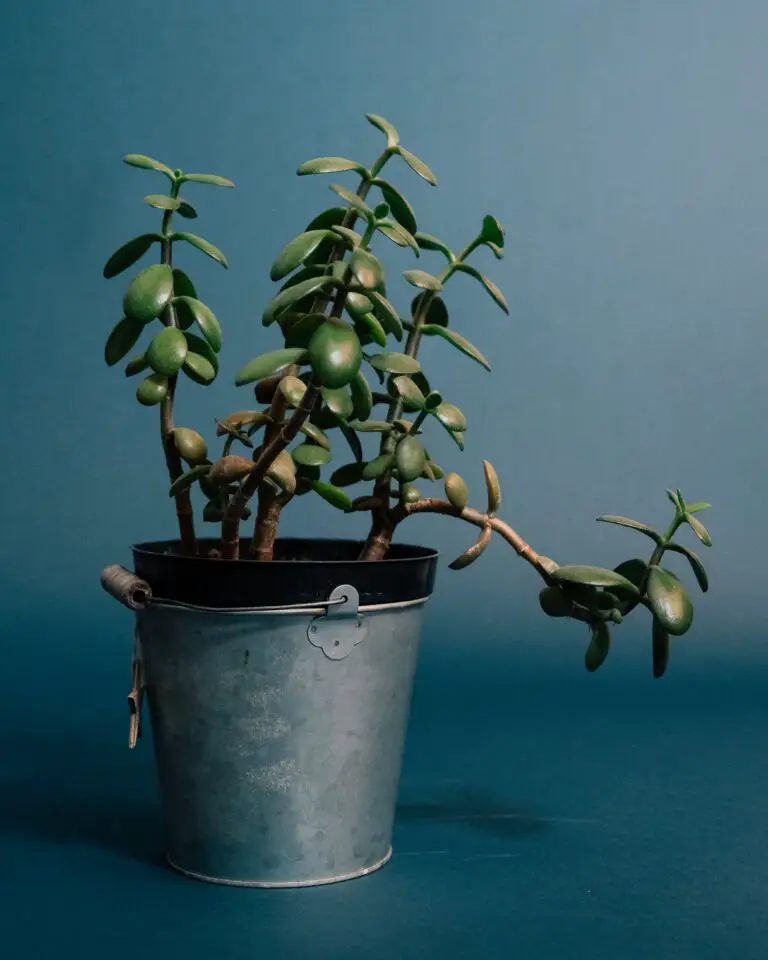
Fungal Infections: Prevention and Cure
Let’s dive into a common headache for Crassula owners: the dreaded fungal infection, the covert culprit behind that unwelcome browning. Picture this—it starts with a few innocent spots, like tiny blemishes on your Crassula’s usually flawless leaves. But don’t be fooled; these seemingly harmless spots can escalate quickly, leaving you with a discolored, unhealthy plant.
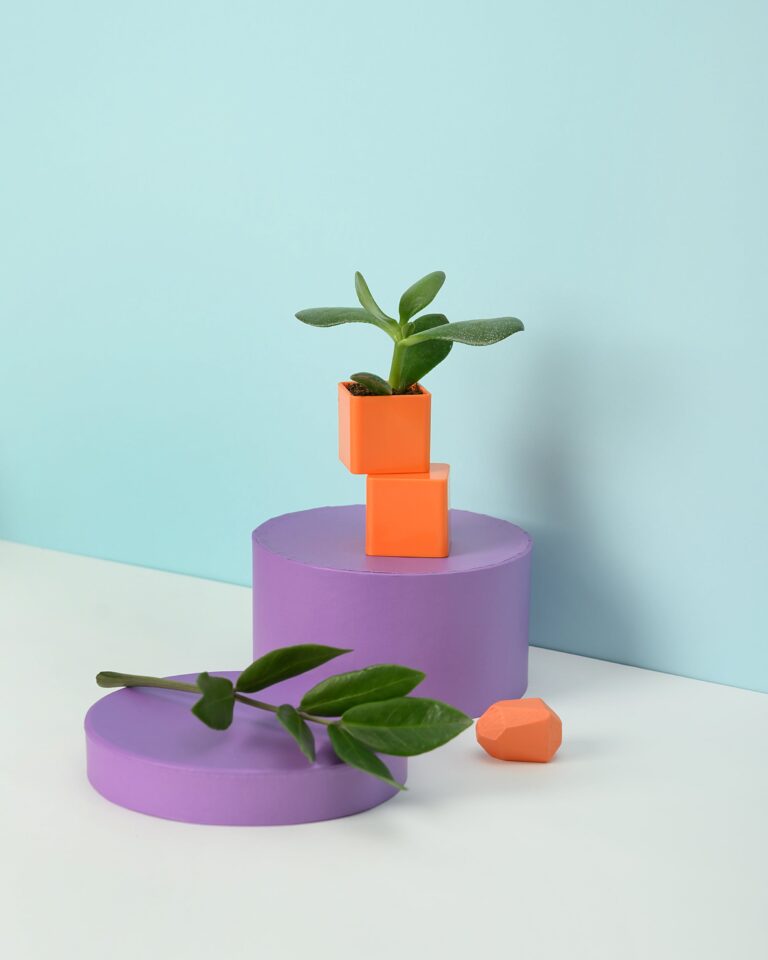
To thwart these fungal foes, begin by donning your detective hat. Inspect your plant regularly for signs of fungal freeloading—discoloration, spots, or a powdery coat, the trademarks of an infection. The moment you spot these signals, take action! Isolate your Crassula to prevent an outbreak among your plant collection. Also, consider your watering habits. Are you drenching your Crassula in water it can’t drink up? Overwatering is a fungal infection’s best friend, so keeping the soil on the drier side invites health rather than disease.
But what if—despite your vigilance—fungus finds a foothold? Fear not! Fungal infections might be stubborn, but they’re not invincible. Employ fungicides as your first line of defense; opt for organic options if you’re eco-conscious. Remove affected parts with sanitized shears to prevent spread, and give your plant a chance at recovery. Remember, consistency in treatment is key—missing a spot today means trouble tomorrow!
Now, let’s get to the heart of prevention. It’s simpler than you think and enormously effective. Ensure your Crassula has enough elbow room for air to circulate freely—a well-ventilated environment is a no-go zone for fungi. Keep your tools clean and your watering judicious, and you’ll have already won half the battle against the browning beast.
But beware—the safe route requires diligence. Stick to the path of preemptive care, and you’ll not only prevent the disheartening sight of a browning Crassula but also revel in the lush, vibrant green of a thriving plant. It’s a dedication to the details that makes all the difference in the plant-care game.
Environmental Factors and Plant Health
When it comes to the well-being of your Crassula, the ambiance of its environment plays a leading role. Think of it as the stage where your plant performs — if the lighting is off or the air is stale, the show just won’t go on! Let’s dive into the environmental cues that could be causing the browning of your beloved Crassula and how to adjust the spotlight for a standing ovation from your green audience.

Temperature swings are the drama queens of the plant world; they can cause your Crassula to throw a tantrum in the form of brown leaves. If you’ve recently moved your plant buddy near a drafty window or next to a toasty radiator, you’re likely seeing the repercussions. These succulents enjoy stability, so maintaining a room temperature between 60–75°F (15–24°C) is like giving them a cozy blanket for their roots.
Humidity, or the lack thereof, can be a sneaky culprit. In their native habitats, Crassulas thrive in arid conditions, meaning that your home’s moisture level might just be turning your plant’s once vibrant green leaves to a crispy brown. It’s a balancing act — too much and they’ll rot; too little and they’ll desiccate. Aim to mimic their natural environment by keeping the air on the dry side, with good ventilation to prevent stagnant, moisture-laden air.
Air circulation is like the breath of fresh air your Crassula craves. Stale, stagnant air is a no-no and can lead to pest infestations and disease, which often manifest as browning leaves. Imagine placing your plant in a room with no movement, akin to a stagnant pond. Just as mosquitoes swarm to still water, pests love still air. A gentle fan or an occasional open window can work wonders and give your plant the airflow it needs to thrive.
Real-life Example: Bringing Your Crassula Back to Life
Take for example my friend Sarah’s Crassula, which started turning brown out of the blue. We played detective and found out her once thriving plant was now sitting right above a heating vent. Relocating the Crassula to a stable spot away from the direct heat corrected the issue, and with consistent monitoring, her plant made a full recovery. It’s amazing what a little environmental TLC can do!
Reviving a Brown Crassula Plant
Watching your Crassula transform from a vibrant green to a worrying brown can be alarming for any plant lover. But fear not! We’ll tackle the brown blues by guiding you through some actionable steps to restore the natural beauty of your succulent friend.
The first step in your rescue mission is to channel your inner gardener and trim away the damaged leaves. Get your pruning shears and gently snip off brown or damaged parts. Away they go! Remember, a clean cut not only prevents further damage but also encourages healthy growth.
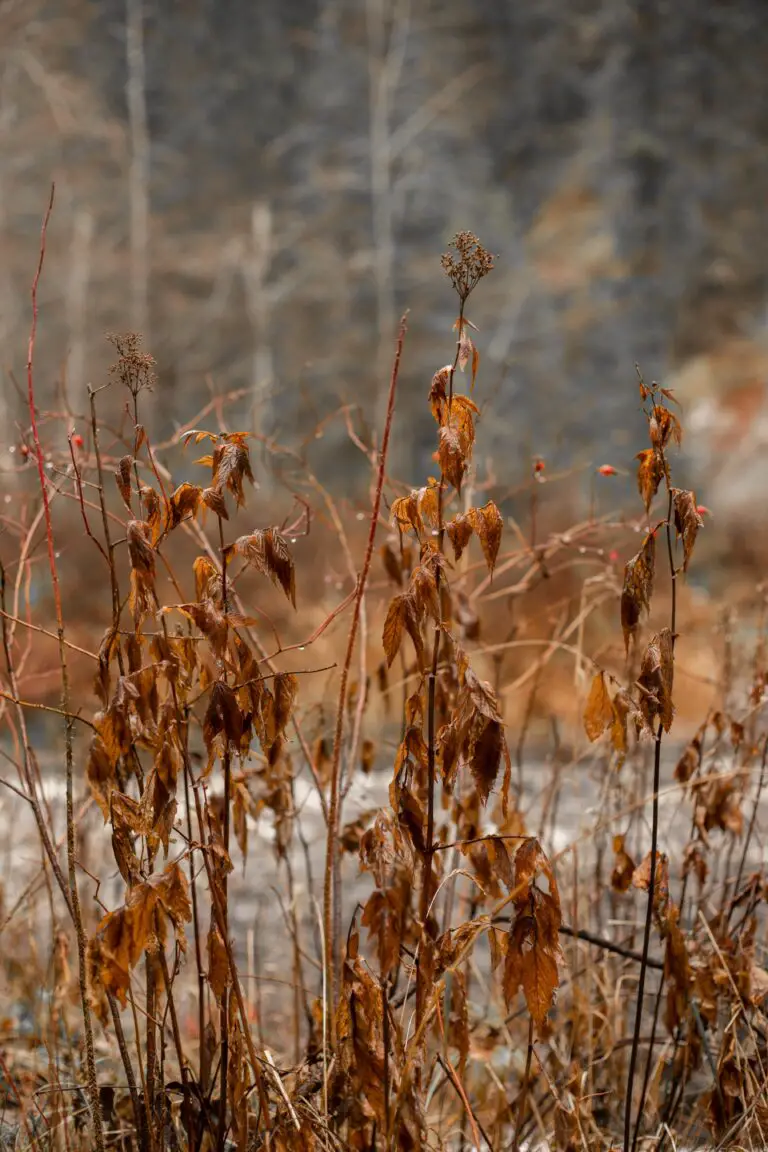
Next on our checklist is to examine the watering routine. “Am I watering too much or too little?” That’s the question to ponder. Overwatering is a common culprit, leading to soggy soil and root rot, so let’s dial it back. Allow the soil to dry out between waterings. On the flip side, if your Crassula is as parched as a desert cactus, it’s time to quench its thirst more frequently.
Sunlight is like the GPS for Crassula; too much direct light, and you can get off course, leading to a brownout. Likewise, not enough light, and your plant may start reaching for the sun, losing its luscious color. The sweet spot? Bright, indirect light. Set your Crassula up by a window where it can bask in the morning rays and chill in the afternoon shade.
Assessing the “whereabouts” of your plant pot comes next. Crassula, being the easygoing type, don’t fuss over repotting. But if you notice the soil quality is as poor as a worn-out pair of jeans, then it’s time for a change. A fresh pot with well-draining soil mix can give your plant a new lease on life.
Finally, temperature and airflow can be game-changers. If your Crassula is shivering from cold drafts or sweltering heat waves, find it a comfortable spot. Aim for a consistent temperature, and ensure it’s not in the path of harsh vents or radiators.
Take these steps to heart, stay vigilant, and before you know it, your brown Crassula will be flaunting green finery once again!
Preventative Measures for a Thriving Crassula
Crassula plants, with their jade-green succulence, can be a joy to any plant lover’s collection. However, the sight of your treasured Crassula turning brown can certainly set off alarms. Don’t fret though, as there are effective strategies you can employ to prevent such issues and ensure your Crassula remains as lively and vibrant as ever. Let’s dive into a handful of preventative measures that can keep browning at bay and your Crassula thriving.
Choosing the Right Soil
The foundation of a healthy Crassula begins with soil selection. Crassula plants crave a specific type of soil – one that drains quickly and prevents moisture from lounging around too long, which might invite root rot. Imagine your Crassula’s roots are like tiny feet—just as you wouldn’t want your feet to sit in damp socks all day, your Crassula doesn’t want soggy roots. Opt for a cactus or succulent mix that will ensure proper drainage and create a hospitable environment for growth.
Size Matters: Proper Pot Selection
Have you ever tried to park a big SUV in a compact car space? It’s not pretty. Similarly, growing a Crassula in an inappropriately sized pot can cause growth issues and ultimately lead to browning. A pot too large might retain excessive moisture, whereas a pot too small might constrain your Crassula’s roots. The key is to choose a pot that gives your Crassula enough room to grow but is snug enough to regulate soil moisture effectively.
Timely Repotting: Keeping It Fresh
Just as children outgrow their shoes, your Crassula might outgrow its pot. Prime time for repotting is when you notice the roots starting to peek through the drainage holes or when the growth seems stunted. It’s like giving your Crassula a new lease on life, providing fresh soil and more space to stretch out. By repotting approximately every two years, you’ll replenish essential nutrients and give your Crassula the boost it needs to avoid browning and other stress-related problems.

Picture this: a Crassula plant that never browns, like the one in our image, standing proudly and verdantly in a sunbathed corner of your living space. This can be your reality. With soil that hugs its roots just right, a pot that fits like a glove, and the rejuvenation that comes with timely repotting, your Crassula will not only survive—it will thrive.
Frequently Asked Questions
Crassula owners, we’ve all been there – spotting those unexpected brown tinges on our beloved green succulents and wondering, “Why is my Crassula turning brown?” Don’t fret! I’ve gathered your burning questions and am here to spill the soil on keeping your Crassula vibrant and healthy.
What causes browning in Crassula plants?
Browning leaves can be a sign of distress, often due to overwatering, underwatering, or sunburn. It’s like your plant is sending an SOS; it’s time for you to tune in and tweak your care routine!
How can I tell if I’m overwatering my Crassula?
If the leaves feel squishy and the soil is soggy, it’s a red flag for overwatering. Picture this: you’re giving your plant a drink equivalent to a human chugging a gallon of water in one go – overwhelming, right? Ease up on the hydration to prevent root rot.
How often should I water my Crassula to prevent browning?
Think of watering like a mini workout for your plant’s roots. You want to find the sweet spot; not too much and not too little. A good rule of thumb is to water when the topsoil feels dry to the touch, about once every two weeks. But remember, your plant’s thirst may vary with the seasons!
Could too much sunlight cause my Crassula to turn brown?
Absolutely! Imagine lounging on the beach all day without sunscreen – ouch! Crassula plants enjoy bright, indirect light, but direct scorching sun can lead to sunburn. Provide some shade during the hottest parts of the day to protect your succulent pal.
Are there pests that can cause browning in Crassula plants?
Yes, pesky parasites like mealybugs and spider mites can cause browning. It’s a real-life plant thriller! If you spot any creepy-crawlies, a neem oil spray is your go-to weapon for sending them packing.
What should I do if my Crassula is already browning?
Don’t throw in the trowel just yet! Trim off the brown bits and adjust your care routine. Assess the watering, light conditions, and inspect for pests. A little plant TLC can go a long way in reviving your Crassula’s luscious looks.
Now, for a visual treat, let’s dive into a video that will show you expert care tips for your Crassula. Get ready to transform your brown-thumb moments into a green-thumb triumph!
Remember, understanding the root of the problem (pun intended!) is your first step towards a flourishing Crassula. Happy planting!
